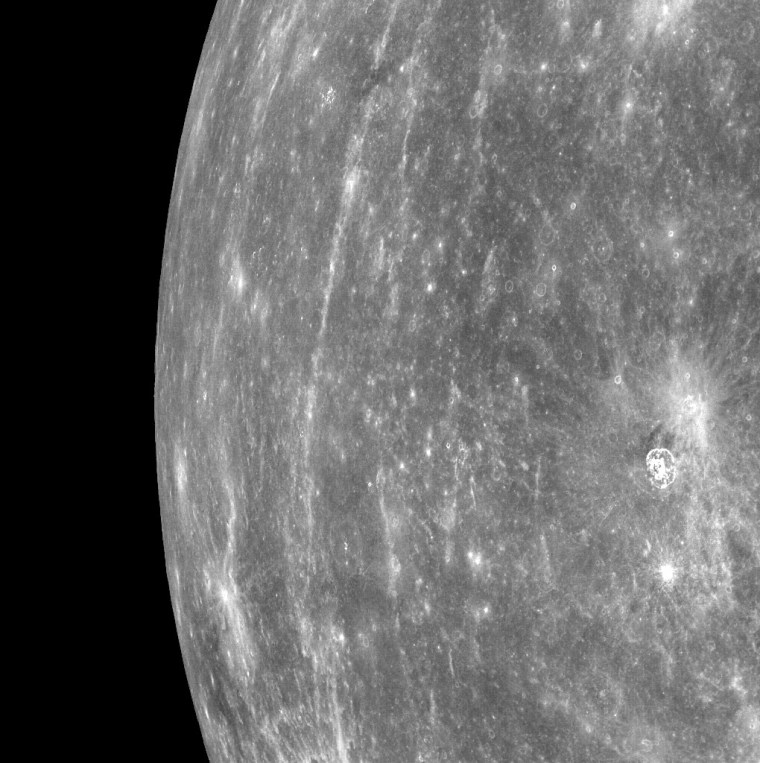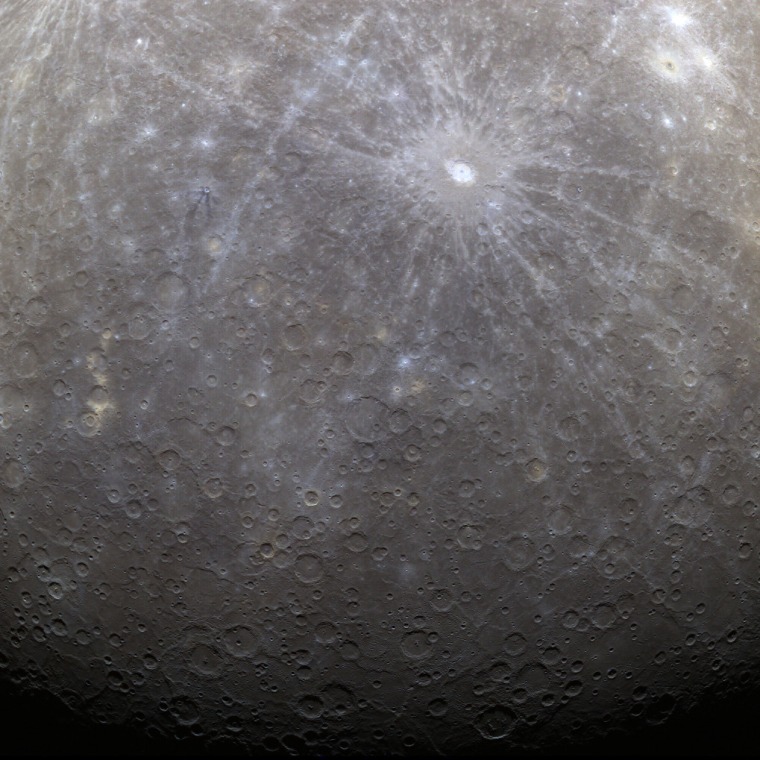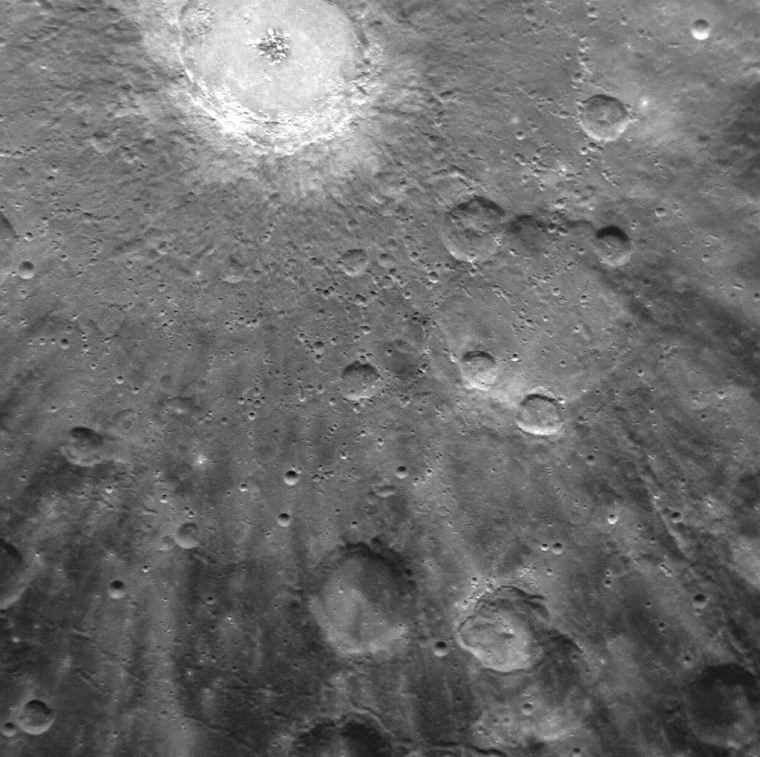NASA's Messenger probe entered orbit around Mercury just this month after a journey of six and a half years, but it's already hard at work. Hundreds of images have been sent back in the past couple of days. Take a look at this trio of highlights, and then get the full story behind these marvels from Mercury:



More about Mercury:
- Scientists tell the story behind the pictures
- First look at Mercury from orbit
- 10 surprising facts about the Mercury probe
- Mercury just might hit us someday
- Interactive: The new solar system
Join the Cosmic Log community by clicking the "like" button on our Facebook page or by following msnbc.com science editor Alan Boyle as b0yle on Twitter. To learn more about my book on Pluto and the search for planets, check out the website for "The Case for Pluto." And if you want to stay on my good side, don't ever call Mercury the "smallest planet."